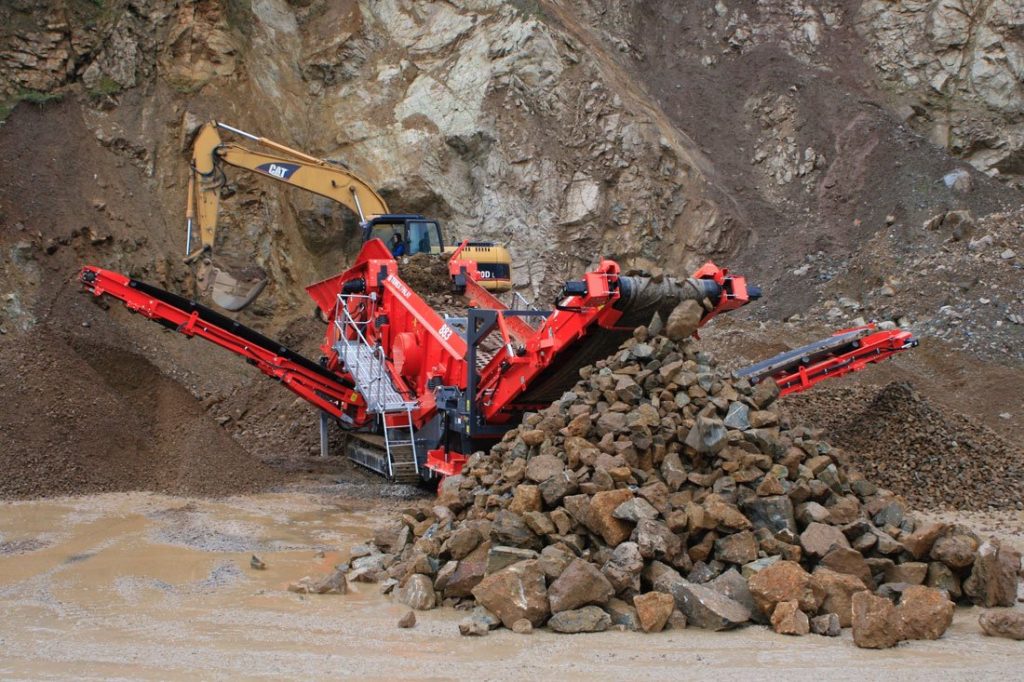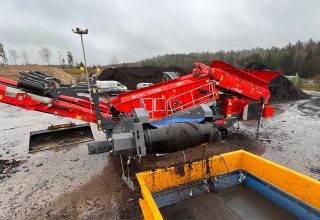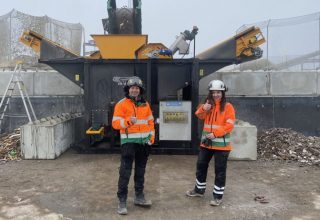Sorting & handling of excavated material in Stockholm
Handling of excavated soil in Stockholm
Do you need help with handling excavated material in Stockholm? Handling of excavated material is a common problem today. Today, millions of tons of excavated material from road construction, industrial establishments, soil remediation, and other infrastructure projects are transported. In many cases, materials are excavated many miles away because someone wants to get rid of the excavated material, to be deposited or used as fill material.
The following arguments are common reasons why excavated material is transported away.
- Loose masses without bearing capacity Possible solution could be to stabilize loose masses with bentonite or lime in a high capacity Screening plants .
- Mixed soils with high moisture content - Possible solution is to sort by size with star sieves allowing topsoil to be reused on site or sold.
- Contaminated soils Possible solution is to sort out the fine fraction where contaminants are often located and blow out organic matter which often absorbs contaminants.
- Too large a stone to be used as soil - Possible solution is to divide the stone into several fractions such as macadam, bedding, sand, etc. These fractions can then be used to replace virgin material.
Below are some of the benefits of these concepts
- Thousands of journeys of heavy traffic in inner cities can be avoided to remove materials that can be reused on site.
- By recycling materials, there is no need to mine new rock or excavate new soil and transport heavy traffic to the site.
- Major economic benefits for landowners in reduced transportation, reduced purchasing and reduced landfill costs.
- Huge environmental benefits in terms of traffic reduction and reuse of existing materials.
If you want to know how much you can save money and reduce your environmental debt, don't hesitate to contact us to calculate excavation masses and get solutions for your specific project.

Figure 2: A concept where a coarse screen removes rock, a star screen removes clay and fine fraction and windshifter removes contaminated organic material.
What is excavated soil?
Excavated soil is a residual material resulting from an excavation, such as road construction, building construction or other infrastructure projects. Excavated soil simply contains what was once placed there before it was excavated.
Depending on the content, different methods can be used to maximize recovery and transform a waste or fill material into marketable products and/or fractions. Sometimes an excavated material is used to fill in/level land, or provide a foundation for construction. This is usually an emergency solution that is unprofitable for the wallet and the environment.
It is important to analyze the content of the excavated material when choosing a recycling method. If they are contaminated, it is often possible to enrich the contamination so that only a small part needs to be landfilled or destroyed. The analysis is important because some contaminants can lead to damage and pollution in the area.
If the masses do not contain environmentally harmful substances, it is often possible to recycle stone, soil, wood, gravel and metal, thus reducing the use of virgin products.
Film 2: Shows excavated masses becoming new topsoil through a finger sieve.
Contact us for handling excavated soil in Stockholm
We at Norditek help you with handling and sorting of excavated material in Stockholm. We have many years of experience and Our knowledgeable staff can help you get the most out of your excavated material. Contact us today for more information!
Shaft masses - purpose
When reusing excavated soil, there must always be a purpose. In other words, you should only accept excavated soil if you have a specific purpose or objective for its use and excavated soil is used as a substitute for another natural material.
Recycling of excavated material
Effective recycling of excavated soil can contribute to better resource management. There are currently rules that determine whether or not excavated material should be regarded as waste. Shaft masses that are not regarded as waste are recycled through the general environmental requirements of the Environmental Code, while shaft masses that are regarded as waste must be examined by an authority. It is also possible to transport the mass to a more advanced treatment plant, where analyses are carried out to maximize recycling and detoxification. The material that cannot be recycled or detoxified finally ends up in a controlled landfill. Norditek's experience is that with the right methods and machinery, it is possible to further reduce landfill.
What is the cost of removing excavated soil in Stockholm?
The cost of removing excavated material in Stockholm varies greatly. It depends partly on what the mass contains, the size of the volume and how far you are from the nearest treatment facility.
In some places, excavated material is only used as backfill, which is often a huge waste of resources. There are also operators who landfill excavated soil even though a large part of it can be recycled. This is often based on ignorance and leads to a huge waste of resources in terms of money, carbon dioxide, emissions and increased production of raw materials.
Sorting shaft masses with Norditek
We have a wide range of machines and concepts for excavated material and topsoil. We are more than happy to help you find the right machine or concept depending on local conditions.

Figure 1. Finlay coarse sorter that sorts excavated material into three fractions with high capacity and quality.
Movie 1: Shows a star sieve that transforms excavated material into high quality soil.
Film 3: Shows sticky masses that are stabilized by adding lime in the screening process.
Novelty
New products in Sweden for washing and recycling of excavated materials
Forget the huge investment in a washing plant! Terex Washing's plant is both flexible and more mobile, which means that it works very well even for smaller production. It will be possible to recycle excavated material for more people because the investment is smaller, mainly because the plant is optimized for smaller production.



